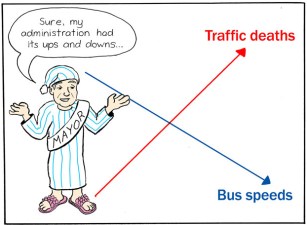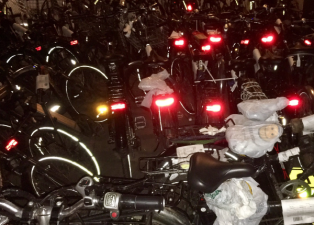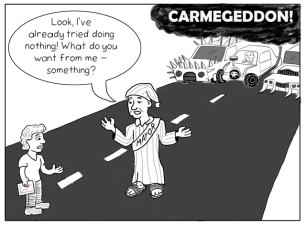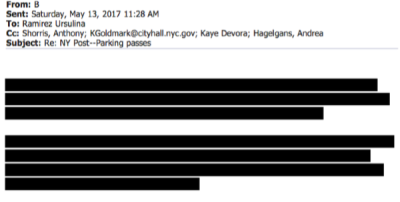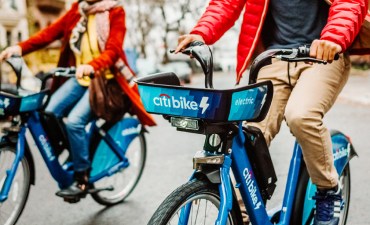Bill de Blasio and the Narcissism of the Windshield Perspective
Most New Yorkers don't own cars. They lose time with their families because their bus home moves at walking speed. They fear for their lives while biking in traffic. It's a different city than the one the mayor experiences, ferried from place to place in an SUV.
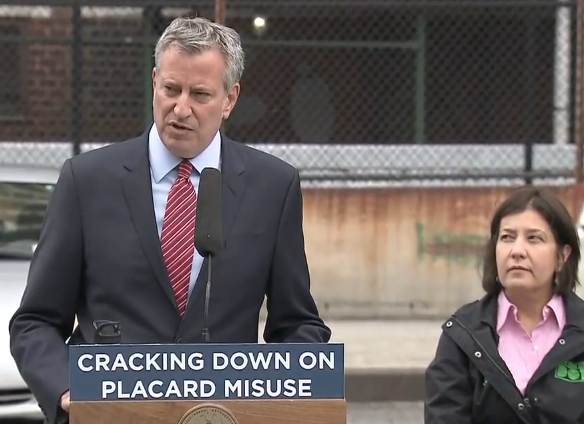
If you haven’t read it yet, Bill de Blasio’s interview with reporters from the late, lamented Gothamist and DNAinfo is worth your time.
In it, the mayor speaks at length about policing, education policy, and the intricacies of housing components in specific development projects.
Then the subject turns to transportation…
Take an educated guess: what percentage of city residents own cars?
I never hazard guesses. I will say the obvious: much less than almost any city in America. But I don’t know the final answer. Do you want to tell me?
45 percent, roughly. Can you take a guess what their median income is?
I can not guess, will not guess.
It’s $85,000 per year. The median for New York City is around $50,000.
Alright. I’ve learned something new today.
This isn’t arcane policy trivia. The share of car-free households in the city has basically remained constant for at least as long as de Blasio has been an elected official. A passing familiarity with the city’s car ownership rate is essential to understanding why good transit and safe streets for biking and walking matter so much in New York — for millions of us, driving is not an option.
The income of car owners, meanwhile, figures heavily in the debate over congestion pricing, which de Blasio insists on calling a regressive tax. His own MTA board appointees, Veronica Vanterpool and David Jones, have produced research showing that congestion fees would generally be paid by well-off motorists while the beneficiaries of the revenue would generally be less affluent transit riders. Yet the mayor remains willfully ignorant.
De Blasio told the DNA and Gothamist crew that he won’t hazard a guess as to basic demographic facts about his constituents, but when it suits him, the mayor doesn’t withhold wild guesses and misinformation, even when he’s addressing a huge audience.
Speaking on WNYC recently, the mayor framed congestion pricing as a “problem” because, “between Brooklyn and Queens, almost five million of the eight and half million New Yorkers, overwhelmingly they would pay this additional cost.”
Most households in Brooklyn and more than a third in Queens don’t even have a car. And only a small fraction of people who do own cars regularly drive into Manhattan below 60th Street. We’re talking about four percent of commuters who would be affected (and the number of commuters is itself smaller than the whole population). The most fully-developed road pricing plan, meanwhile, is projected to draw more revenue from Manhattanites than residents of any other borough.
Why does de Blasio assume that every single person in Brooklyn and Queens will pay a congestion fee? Well, one reason might be that for years, he car commuted from Brooklyn to Lower Manhattan. De Blasio campaigned for mayor as an outer borough motorist who drove himself to meetings everywhere. He assumes that everyone would pay the congestion fee because he sees himself paying the fee.
Other New Yorkers have to lose time with their families because their bus home moves at walking speed. They have to choose between paying a transit fare to get to work and putting food on the table. They have to fear for their lives while biking in traffic, and put up with abuse from placard-waving state senators.
It’s a different city than the one the mayor experiences, ferried from place to place by police escort, conducting business in the backseat of an SUV.
